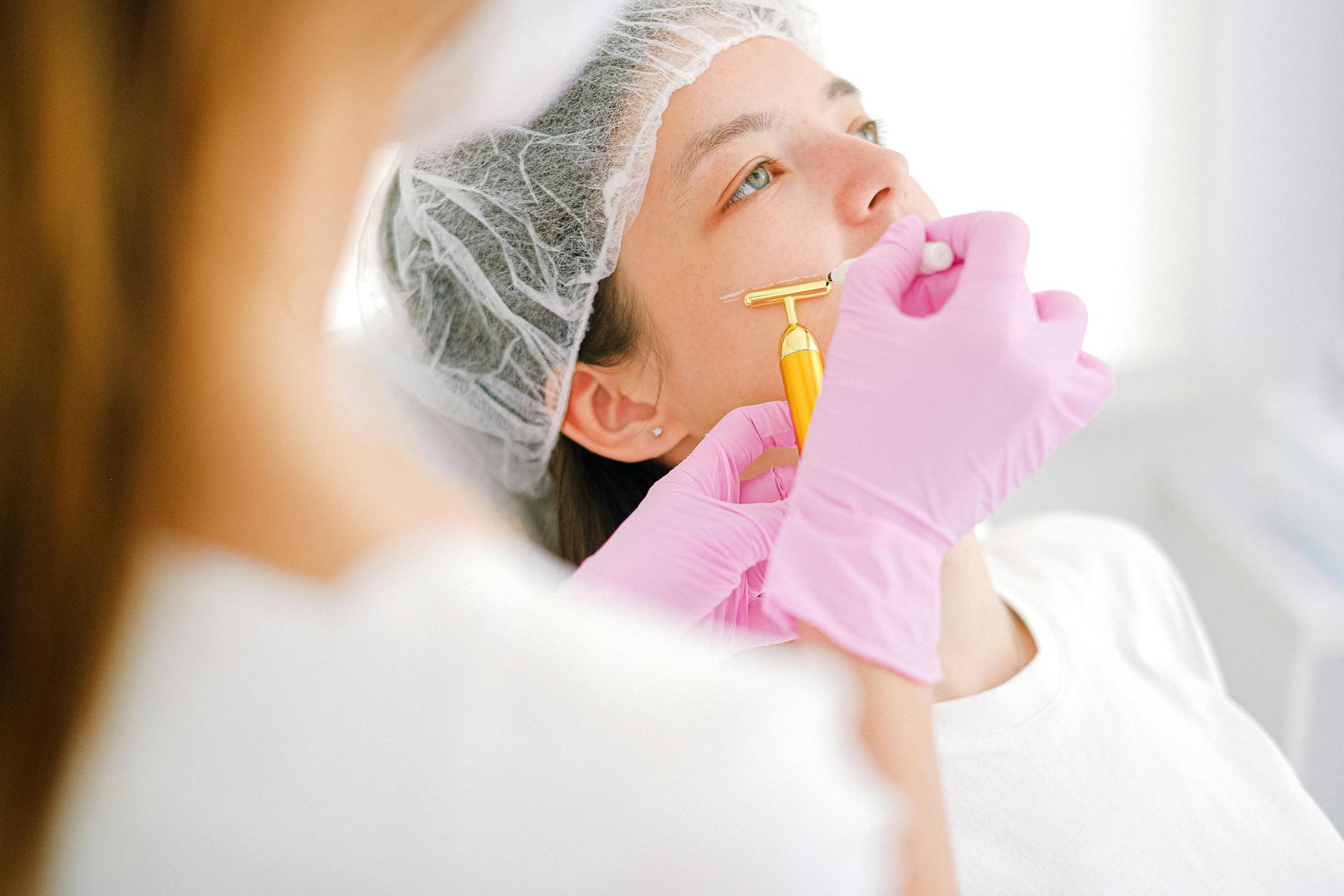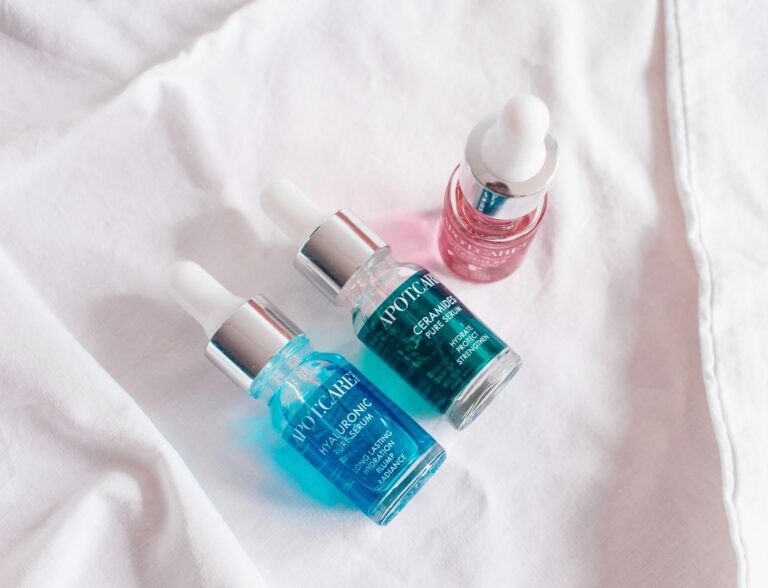
As individuals age, their skin may begin to lose the firmness and plumpness associated with youth, resulting in wrinkles and volume loss that many aim to address.
In the pursuit of a more youthful appearance, Botox vs fillers for wrinkles and volumes have become increasingly popular options. However, it is important to understand how these treatments differ, how they function, and which might be the most suitable choice for your needs.
This article provides a comprehensive overview of Botox and fillers, including their benefits, potential risks, costs, and advice on finding the right provider in the UK.
Explore the information to uncover the best solutions for rejuvenating your skin.
What Are Wrinkles and Volume Loss?

Wrinkles and volume loss are common indications of ageing that many individuals experience as they grow older. These changes in the skin’s appearance can stem from various factors, such as decreased collagen production and reduced skin elasticity.
As a result, fine lines may develop, and hollowness can appear in areas like the cheeks and under-eye area. Understanding these conditions is crucial for anyone considering aesthetic treatments for facial rejuvenation, as they can greatly affect overall facial harmony and confidence.
Conducting a proper skin analysis and creating personalised treatment plans can effectively help restore a youthful appearance.
What Are Botox and Fillers?
Botox and fillers are quite popular cosmetic procedures aimed at enhancing facial appearance and addressing the signs of ageing.
Botox is a neurotoxin that works by temporarily relaxing the muscles that cause wrinkles, while fillers, which are often composed of hyaluronic acid, help restore volume and smoothness to areas that may have lost fullness over time.
Both treatments are non-surgical, providing individuals with a way to achieve natural-looking results and improved facial contouring without the need for lengthy recovery periods.
Gaining a clear understanding of these options can help individuals make informed decisions about their aesthetic goals.
What Are the Differences Between Botox and Fillers?
The distinctions between Botox and fillers are significant, encompassing their composition, application methods, and intended outcomes. Botox functions by inhibiting muscle contractions, which effectively reduces the appearance of dynamic wrinkles, such as forehead lines and crow’s feet. On the other hand, fillers are formulated to add volume to specific areas of the face, including nasolabial folds and tear troughs. Recognising these differences is essential for individuals seeking effective options for facial rejuvenation and achieving their aesthetic aspirations.
For example, Botox primarily targets the smoothing of expressive lines, allowing individuals to maintain a more youthful appearance while preserving the natural dynamics of facial expression. In contrast, fillers focus on restoring lost volume, effectively enhancing the face’s overall symmetry and youthful contours.
When considering treatment sessions, Botox procedures are typically quick, often lasting around 15 to 30 minutes. In contrast, filler treatments may require a bit more time due to the precision needed in the injection techniques. The results from Botox usually last between three to six months, whereas fillers can offer effects that persist for several months to over a year, depending on the specific product used and the individual’s skin condition.
Both treatments have potential side effects, including bruising and swelling, making it crucial to understand their unique pathways to effectiveness for knowledge-based decision making.
How Do Botox and Fillers Work?

Botox and fillers operate through different mechanisms to improve facial aesthetics and address signs of ageing.
Botox, which is made up of neurotoxins, specifically targets the underlying muscles responsible for wrinkles, resulting in a smoother skin texture and better facial symmetry.
In contrast, fillers, particularly those containing hyaluronic acid, offer immediate volume restoration and hydration. They fill in wrinkles and enhance areas such as the lips and cheeks to achieve the desired aesthetic results.
It is important to understand how these treatments work to establish realistic expectations.
How Does Botox Work?
Botox functions by utilising neurotoxins to temporarily block nerve signals in the muscles that contribute to wrinkle formation. This process effectively reduces the appearance of dynamic wrinkles, such as forehead lines and crow’s feet, leading to a smoother and more youthful look.
Typically, the treatment is carried out in a medical spa or beauty clinic by qualified professionals, ensuring both patient safety and optimal results.
The injections are generally administered in specific areas, such as the forehead, between the eyebrows, and around the eyes, which are common locations for expression lines. Patients can usually expect to see results within a few days, with effects lasting approximately three to six months. This duration can vary based on individual factors, including muscle activity and the amount injected.
To prioritise safety, practitioners adhere to strict procedural standards, employing sterile techniques and appropriate dosages to minimise any risks. After the treatment, patients often receive post-care instructions to facilitate recovery and enhance results, highlighting the significance of education in understanding this popular cosmetic procedure.
How Do Fillers Work?
Fillers utilise substances like hyaluronic acid to restore volume and enhance the contours of the face. When injected into targeted areas, such as the cheeks, lips, and nasolabial folds, they effectively plump and smooth out wrinkles, resulting in a youthful appearance with immediate effects.
The success of filler treatment largely depends on the skill of the practitioner and their understanding of facial aesthetics.
This versatility makes fillers an excellent option for addressing a range of concerns, including thinning lips, sagging skin, and hollowness under the eyes. Different formulations are designed to achieve specific results, ensuring that each patient receives a treatment tailored to their unique goals.
It is essential to select a qualified practitioner, as their expertise plays a significant role in patient satisfaction and the overall aesthetic results.
A comprehensive consultation is vital, allowing patients to discuss their expectations and work towards the best possible outcomes with customised filler solutions.
What Are the Benefits of Botox?
The benefits of Botox go beyond merely reducing wrinkles, which is why it has become a popular option for those looking for anti-ageing solutions.
By relaxing the muscles responsible for dynamic wrinkles, Botox not only smooths out existing lines but also helps prevent new ones from forming, ultimately enhancing one’s overall facial aesthetics.
Many patients express high levels of satisfaction with the results, which can last for several months, making Botox an effective and convenient choice for facial rejuvenation.
What Are the Benefits of Fillers?

Fillers present a variety of advantages that contribute to their popularity in the field of aesthetic treatments. One of the primary benefits is their ability to restore volume instantly to areas of the face that may have lost fullness due to ageing or other factors.
Along with this immediate effect, fillers also enhance facial contouring and improve skin texture. Many patients appreciate the natural-looking results they achieve, which significantly boosts their satisfaction.
For these reasons, fillers have become a key component in the anti-ageing regimens of many individuals.
Which Is Better for Wrinkles and Volume Loss?
Deciding whether Botox or fillers is the more suitable option for addressing wrinkles and volume loss really comes down to individual needs and aesthetic goals.
Botox tends to be more effective for dynamic wrinkles, which are caused by muscle movement, such as those pesky forehead lines and crow’s feet.
On the other hand, fillers excel when it comes to restoring lost volume and smoothing out static wrinkles, particularly in areas like the cheeks and lips.
A comprehensive consultation with a qualified practitioner can guide patients through their choices and help them identify the best solution for their specific concerns.
What Are the Factors to Consider?
When evaluating the choice between Botox and fillers, several important factors can influence a patient’s decision. These include the specific type of wrinkles or volume loss being treated, the desired duration of results, and individual aesthetic preferences.
Additionally, patient demographics and skin types may determine which treatment is more appropriate, highlighting the necessity of a thorough consultation with a qualified professional.
A comprehensive skin analysis can uncover significant contraindications that might steer a patient away from certain options, such as active skin conditions or sensitivities. Personal preferences regarding the invasiveness of the treatment and the anticipated recovery time also play a vital role in the decision-making process.
It is crucial to understand the potential risks associated with each treatment, such as bruising or swelling, as this knowledge contributes to managing patient expectations.
Those considering these cosmetic enhancements should engage in open communication about their goals and any medical history that may influence the selected treatment, ensuring a personalised and effective approach.
What Are the Results of Botox and Fillers?
The results of Botox and fillers can differ quite a lot depending on individual factors and the areas being treated. Generally speaking, Botox tends to gradually smooth out wrinkles, with noticeable effects appearing within a few days. In contrast, fillers provide immediate volume enhancement, visible right after the injection.
Many before-and-after comparisons highlight remarkable transformations, which significantly contribute to high patient satisfaction rates for both treatments.
For individuals considering these options, it is crucial to recognise that the effectiveness largely depends on the practitioner’s expertise and the specific treatment areas. Typically, the effects of Botox last anywhere from three to six months, influenced by the patient’s metabolism and muscle activity. Fillers, however, can last from six months to a year, offering a more long-lasting solution for volume loss.
Patients often express a boost in confidence as they see visible improvements, making it essential to provide thorough patient education to manage expectations and support informed decisions regarding these aesthetic treatments.
What Are the Risks and Side Effects of Botox and Fillers?

Botox and fillers are generally considered safe cosmetic procedures, but it is important to acknowledge that they do come with potential risks and side effects.
Most commonly, patients may experience temporary bruising, swelling, or redness at the injection sites. However, there can also be more serious reactions, such as allergic responses or asymmetry.
Being aware of these risks is crucial for anyone considering these treatments, as it helps ensure that they make informed decisions and prioritise their safety.
What Are the Common Side Effects?
Common side effects associated with Botox and fillers typically include minor bruising, swelling, and redness at the injection sites. Fortunately, these effects usually resolve within a few days.
Patients may also experience temporary discomfort or a mild headache, but rest assured, these sensations are generally short-lived. By understanding these common reactions, patients can set realistic expectations and are encouraged to adhere to proper aftercare and follow-up care.
Some individuals may notice a slight change in their facial expression or temporary asymmetry as their bodies adjust to the treatment. Recovery time can vary; however, most people find they can return to their regular activities almost immediately. It is advisable to avoid strenuous exercise and excessive sun exposure for at least 24 hours following the treatment.
Many patients express concerns about looking unnatural or overdone, which highlights the importance of selecting a qualified practitioner and engaging in open dialogue about desired outcomes. By addressing these concerns upfront, patients can enhance their overall satisfaction with the results.
What Are the Rare Side Effects?
While it is uncommon, side effects associated with Botox and fillers can occur, including allergic reactions and more serious complications such as infections or nerve damage. Patients should be aware of these risks and engage in thorough discussions about any potential contraindications with their provider during the consultation process. This step is essential in ensuring a safe and effective treatment experience.
It is important for individuals considering these treatments to have open conversations with their healthcare providers, discussing their medical history and any existing health conditions that could complicate the procedure. For example, conditions like neuromuscular disorders or certain skin sensitivities may increase the risk of adverse effects.
Recognising the signs of complications, such as unusual swelling or difficulty swallowing, is crucial for taking prompt action.
Being well-informed about the full range of possible side effects enables patients to make educated decisions, ultimately prioritising their safety and well-being as they explore the world of cosmetic enhancements.
How Much Do Botox and Fillers Cost in the UK?
The cost of Botox and fillers in the UK can vary considerably, depending on several factors such as the provider’s expertise, the geographical location, and the specific treatment areas involved.
Generally, Botox is priced per unit, while fillers are charged per syringe, which can result in a wide range of total treatment costs.
It’s important for individuals considering these aesthetic treatments to understand these pricing structures, as this knowledge helps them make informed financial decisions.
What Are the Factors Affecting the Cost?
The cost of Botox and fillers can be influenced by several factors, such as the expertise of the provider, the geographical location of the treatment facility, and the specific products used. In areas where operational costs are higher, patients may encounter increased pricing.
Additionally, the skill level of the injector can significantly affect both the overall quality and longevity of the results. By understanding these factors, patients can budget effectively and select the right provider for their specific needs.
The experience and credentials of the injector are particularly important, as highly trained professionals with a strong track record often charge higher fees due to their ability to achieve natural-looking outcomes.
Market rates for these cosmetic treatments can vary from one region to another, resulting in a wide range of prices. For example, metropolitan areas generally have higher living costs, which can lead to increased treatment prices compared to rural locations.
By considering these elements, individuals can make informed decisions that align with their financial plans and aesthetic objectives.
How to Choose the Right Provider for Botox and Fillers?

Selecting the appropriate provider for Botox and fillers is essential for ensuring both safety and the achievement of desired results. Individuals considering these treatments should seek qualified providers, such as board-certified dermatologists or plastic surgeons with significant experience in aesthetic medicine.
Conducting comprehensive research, including reading reviews and testimonials, can greatly assist in making informed decisions about aesthetic treatments. Additionally, exploring the best Botox deals in your area in the UK can help you find a provider who offers competitive pricing without compromising on quality or safety. Combining thorough research with consultations ensures that you receive treatment from a reputable professional who prioritises your goals and well-being.
What Qualifications Should the Provider Have?
When selecting a practitioner for Botox and fillers, it is essential to ensure that they possess the appropriate qualifications, such as board certification in dermatology or plastic surgery. Experience with injection techniques and familiarity with various product types are critical factors that contribute to safe and effective treatment outcomes. A qualified practitioner will prioritize patient safety and satisfaction, guiding clients through the entire process.
It is also important for the individual to have completed comprehensive training specifically tailored to aesthetic procedures, as this helps to mitigate risks and enhance results. Practitioners should remain updated on the latest advancements and techniques in cosmetic treatments, ensuring they can offer optimal care and address any potential concerns.
Clients should feel enableed to inquire about the practitioner’s experience with similar procedures and to seek evidence of successful outcomes. By choosing someone with a strong educational background and extensive hands-on training, patients can feel more secure about their treatment choices and overall health.
What Are the Red Flags to Look Out For?
When searching for a provider for Botox and fillers, it is important to be mindful of potential red flags that may indicate concerns regarding safety or professionalism. These red flags can include providers who offer prices significantly lower than the market average, lack the necessary credentials, or do not conduct comprehensive consultations.
By remaining vigilant about these warning signs, patients can avoid substandard care and enhance their treatment experience.
It is also essential to be cautious of providers who pressure patients into making hasty decisions or do not provide clear answers to questions regarding the procedure. A lack of transparency about the products being used or negative online reviews may also suggest potential issues.
Patients should look for professionals who emphasise thorough assessments and customised treatment plans, as this demonstrates their dedication to excellence and client safety. A holistic approach, where patient concerns are genuinely considered and thoughtfully addressed, helps establish a trusting and professional relationship.
Frequently Asked Questions
What is the difference between Botox vs fillers for wrinkles and volume?
Botox and fillers are both cosmetic treatments used to reduce the appearance of wrinkles and add volume to the face. However, they work in different ways. Botox temporarily paralyzes the muscles that cause wrinkles, while fillers add volume to areas that have lost elasticity and fullness due to aging.
Which treatment is more effective for wrinkles and volume in the UK?
The effectiveness of Botox and fillers for wrinkles and volume depends on individual factors such as skin type, severity of wrinkles, and desired results. Some people may see better results with Botox, while others may benefit more from fillers. It is best to consult with a qualified medical professional to determine the best treatment for your specific needs.
How long do the results of Botox and fillers last?
The results of Botox typically last for 3-4 months, while fillers can last anywhere from 6 months to 2 years depending on the type used. Both treatments require maintenance sessions to maintain the desired results.
Are there any side effects of Botox and fillers for wrinkles and volume in the UK?
As with any medical procedure, there are potential side effects associated with Botox and fillers. Some common side effects may include bruising, swelling, and redness at the injection site. It is important to choose a qualified and experienced medical professional to minimise the risk of side effects.
Which treatment is more affordable for wrinkles and volume in the UK?
The cost of Botox and fillers can vary depending on the amount and type of product used, location, and the expertise of the medical professional. In general, Botox tends to be more affordable than fillers, but it is best to consult with a medical professional to determine the best option for your budget.
Can Botox and fillers be used together for wrinkles and volume in the UK?
Yes, Botox and fillers can be used together to achieve optimal results. In fact, many people choose to combine the two treatments for a more comprehensive anti-aging approach. However, it is important to discuss this option with a qualified medical professional to ensure safety and effectiveness.






